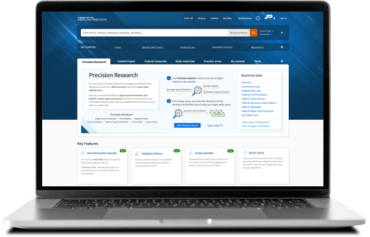In this environment of high attrition and “quiet quitting,” law firms are taking a hard look at how their cultures and reward systems support or detract from attorney well-being. “So many organizations – law firms included – have had these pandemic epiphanies as they see their people assessing their personal and professional priorities,” says Nita Cumello, Global Client Director and Director of Well-Being for Global Large Law at Thomson Reuters. Cumello works with law firms to understand and develop data-driven approaches to shift their cultures toward greater well-being.
Well-being in the workplace
According to the International Bar Association (IBA), more than a third of attorneys report that their work has a negative or extremely negative impact on their well-being. So, while the stresses of pandemic life and social upheaval have certainly played a part in legal professionals’ levels of burnout, work is still a heavy contributor.
The past few years have certainly tested everyone’s ability to cope and revealed gaps in abilities to contribute and grow. That increases attrition, but it also affects performance. “When people are burned out, they’re not optimizing their ability to zealously represent their clients,” Cumello says. “Clients want to work with attorneys who are at their best. Worn-out attorneys can’t consistently deliver their best work.”
Cumello says that firms are starting to shift their thinking about supporting attorney well-being to improve retention and performance. “Thomson Reuters data shows that one thing firms have done really well throughout the pandemic and beyond is offering meaningful support to individuals,” she says. “They are providing new benefits, giving more days off, and offering well-being apps. Now, the industry is going further, evolving to an understanding that we can’t just place the onus on the individual.”
How to help improve attorney well-being in your workplace
What can law firms do to meaningfully support well-being within the firm? There are no easy answers, given that so much of the pressure in the legal industry has built up over generations. Cumello noted several instances of firms hiring Chief Well-being Officers to lead their efforts. With or without a dedicated C-suite leader, there are some steps that firms of all sizes can take to shape a healthy work environment that promotes attorney well-being.
Define your purpose and vision
Getting clear on your purpose and vision will help attorneys know what they’re contributing to. “Any firm can say they’re in business to serve clients,” Cumello says. But be clear about why and how you serve clients. “At Thomson Reuters, we all know that our purpose is to ‘Inform the Way Forward.’ With that in mind, I can focus on providing the best client service while helping them move through the current moment to something better, whatever that moment is.”
Reconsider structural barriers to well-being
The billable hour and the pressure to advance are two drivers that attorneys and other legal professionals cite when they walk away from law firm life. Look at rewards and job tracks to see whether you can make adjustments that align to your purpose and vision and improve the employee experience. Cumello notes that people may not take advantage of well-being programs because they need to keep their billable hours. Some firms solve for this by offering billable hour credit for time spent in well-being programs.
Equip attorneys to work efficiently and invest in work they care about
Technology enables huge efficiencies in the work that used to be pure drudge work. Tasks such as legal research and discovery could take dozens or hundreds of hours a generation ago. Now, technology and sophisticated data tools enable this work to be completed in a fraction of that time. Attorneys can capitalize on efficiency and use the time for other higher-value work. “Partners are realizing that new attorneys don’t have to do their tasks manually, just because that’s how the partner learned it. We can operate differently now,” Cumello says.
When attorneys have less pressure to deliver billable hours and advance, they often find satisfaction in filling their time in other ways. “For some, it’s client-facing or pro-bono work, others take on innovation projects, and others take the time at home with their families knowing that they were able to zealously represent their client that day,” she says.
The drive to add more flexibility and balance to law firm culture is likely to grow as new law school graduates come to the workforce trained to protect their well-being. Our white paper provides more ideas to bring a more balanced approach to your firm.











